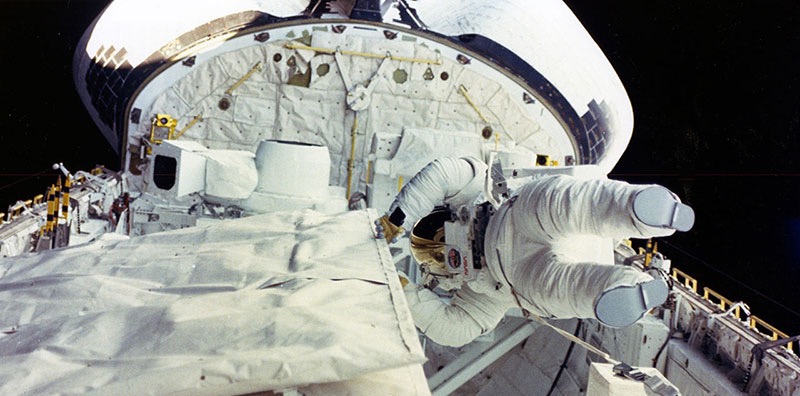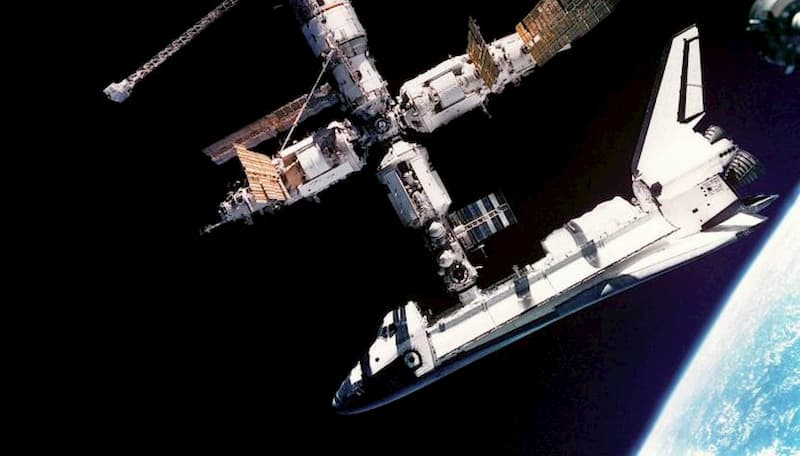(Andy Corbley) A type of fungus that uses nuclear radiation as energy could serve as a possible form of protection, shielding astronauts from potential harm.
Related New Intermittent Fasting Program Shown to Suppress Cancer and Metabolic Disease in Mice and Humans
by Andy Corbley, August 13th, 2020
Outside of the protective magnetosphere and atmosphere of Earth, astronauts are showered with a twenty-fold higher amount of ionizing radiation—levels that would prove unsustainable without protection. But a discovery at the nuclear accident site of Chernobyl in Ukraine, has offered a possible solution.
A team of scientists from Stanford and the University of North Carolina, Charlotte, discovered a type of fungus growing inside the destroyed reactors of the Chernobyl Nuclear Power Plant, and thought if there are forms of life that can survive advanced radiation exposure long-term, they might be able to help protect astronauts on extraterrestrial voyages.
The fungus, called cladosporium sphaerospermum, uses melanin pigments to convert gamma radiation into chemical energy in a process called radiosynthesis. Observing this process led to the scientists arranging with NASA for the fungus to be sent to the International Space Station (ISS) for testing.
A living shield

At the ISS, the experiment produced mixed results. The fungus was placed on around half of the surface of a petri dish. For the next 30 days, radiation levels were measured to compare how much passed through the fungus and glass compared to just the glass on the bare half of the dish.
Book The UFO Experience — A Scientific Inquiry
Radiation levels were reduced by 2%, which wasn’t what the scientists were hoping for. However, the relatively low number doesn’t mean the experiments were a failure.
Writing in the abstract of the pre-peer review journal BioRxiv, the scientists detail how their results could be extrapolated to produce an almost entirely zero-cost barrier for future Mars or lunar mission astronauts, vehicles, and structures.
“Estimations based on linear attenuation coefficients indicated that a 21 cm (8 inch) thick layer of this fungus could largely negate the annual dose-equivalent of the radiation environment on the surface of Mars.”
Putting on our sci-fi thinking caps, we’d have to imagine a Mars station on which astronauts would have to grow an 8-inch thick screen of fungus across the roof and walls of their base, transforming it into a mass of greyish filaments studded with toadstools like Yoda’s hut in Star Wars, or Radagast the Brown’s house in The Hobbit.
It sounds like the stuff of fantasy, but it could save lives while costing space exploration investors almost nothing.
About The Author
Andy Corbley is the founder and editor of World At Large, a small environment, travel, and lifestyle focused journal that stresses integrity, nuance, and honesty which launched in early March 2019.
Stillness in the Storm Editor: Why did we post this?
The news is important to all people because it is where we come to know new things about the world, which leads to the development of more life goals that lead to life wisdom. The news also serves as a social connection tool, as we tend to relate to those who know about and believe the things we do. With the power of an open truth-seeking mind in hand, the individual can grow wise and the collective can prosper.
– Justin
Not sure how to make sense of this? Want to learn how to discern like a pro? Read this essential guide to discernment, analysis of claims, and understanding the truth in a world of deception: 4 Key Steps of Discernment – Advanced Truth-Seeking Tools.
Stillness in the Storm Editor’s note: Did you find a spelling error or grammatical mistake? Send an email to [email protected], with the error and suggested correction, along with the headline and url. Do you think this article needs an update? Or do you just have some feedback? Send us an email at [email protected]. Thank you for reading.
Source:
https://www.goodnewsnetwork.org/chernobyl-fungus-grown-on-rockets-may-protect-astronauts/

Leave a Reply